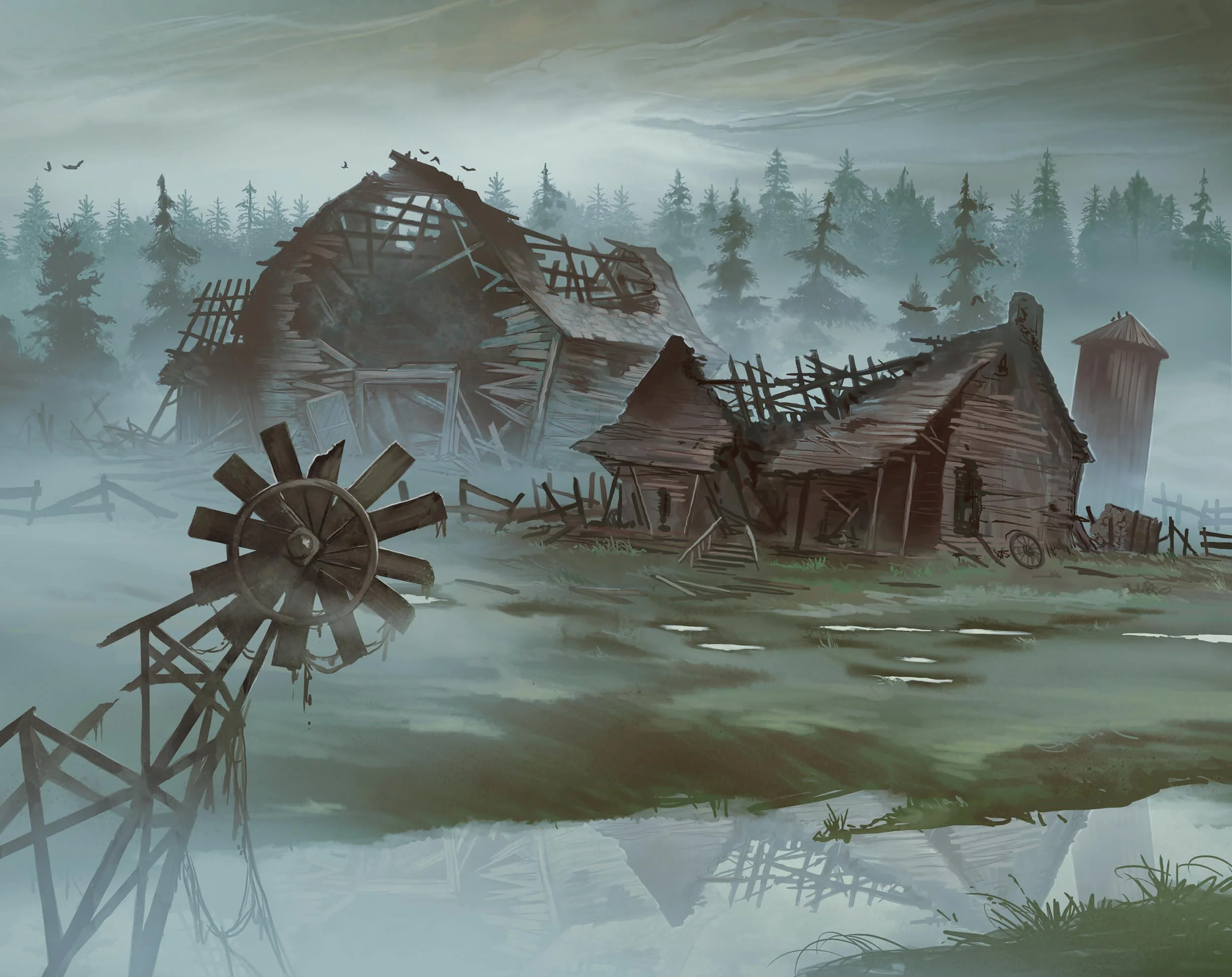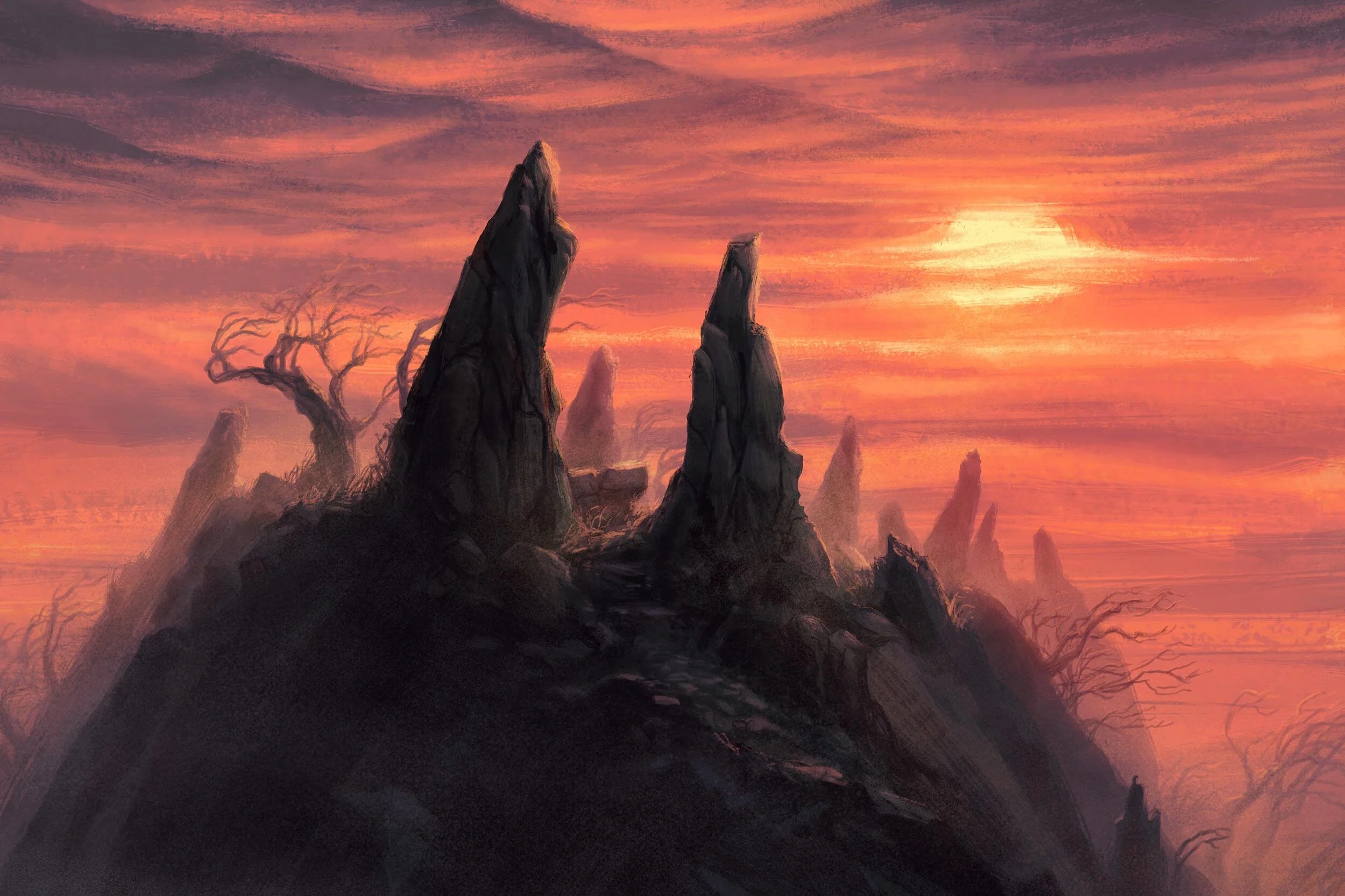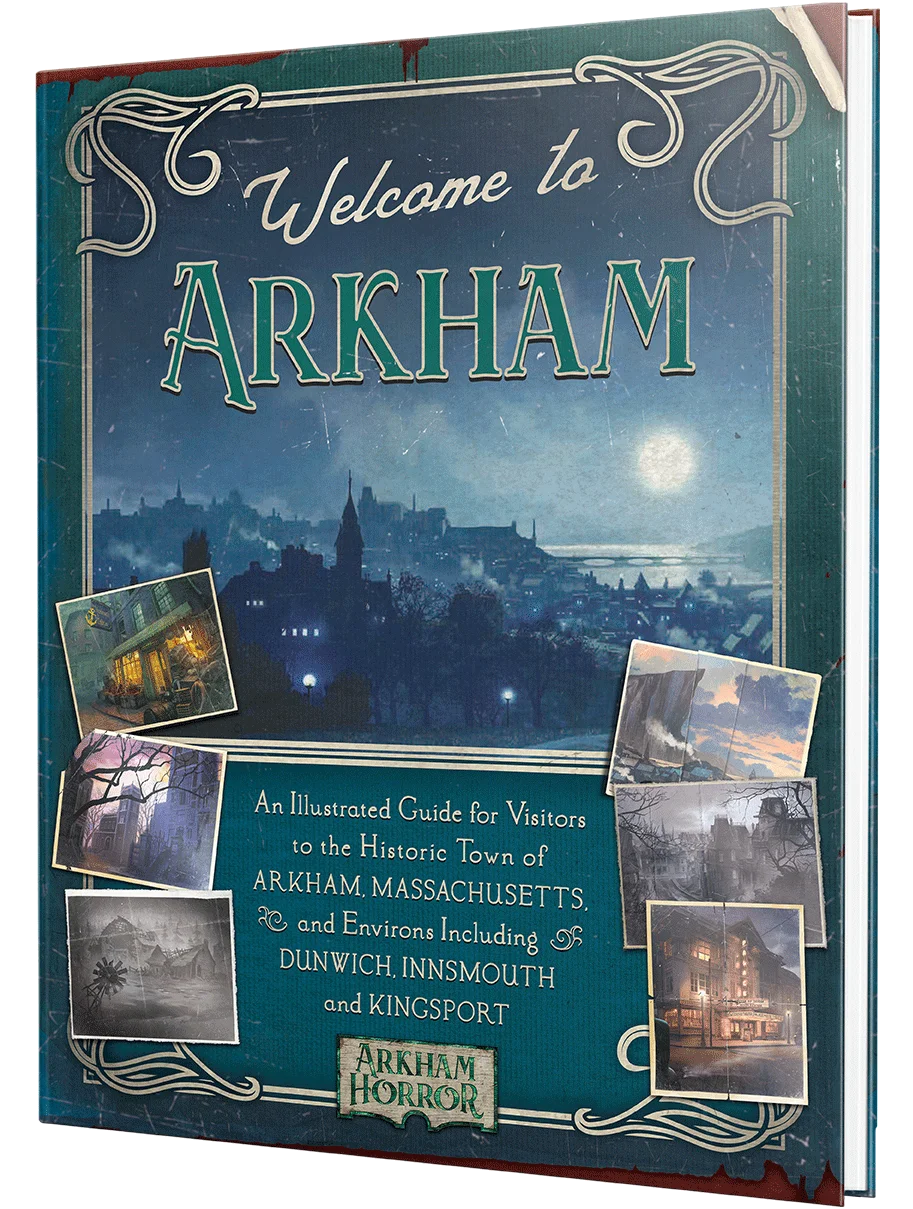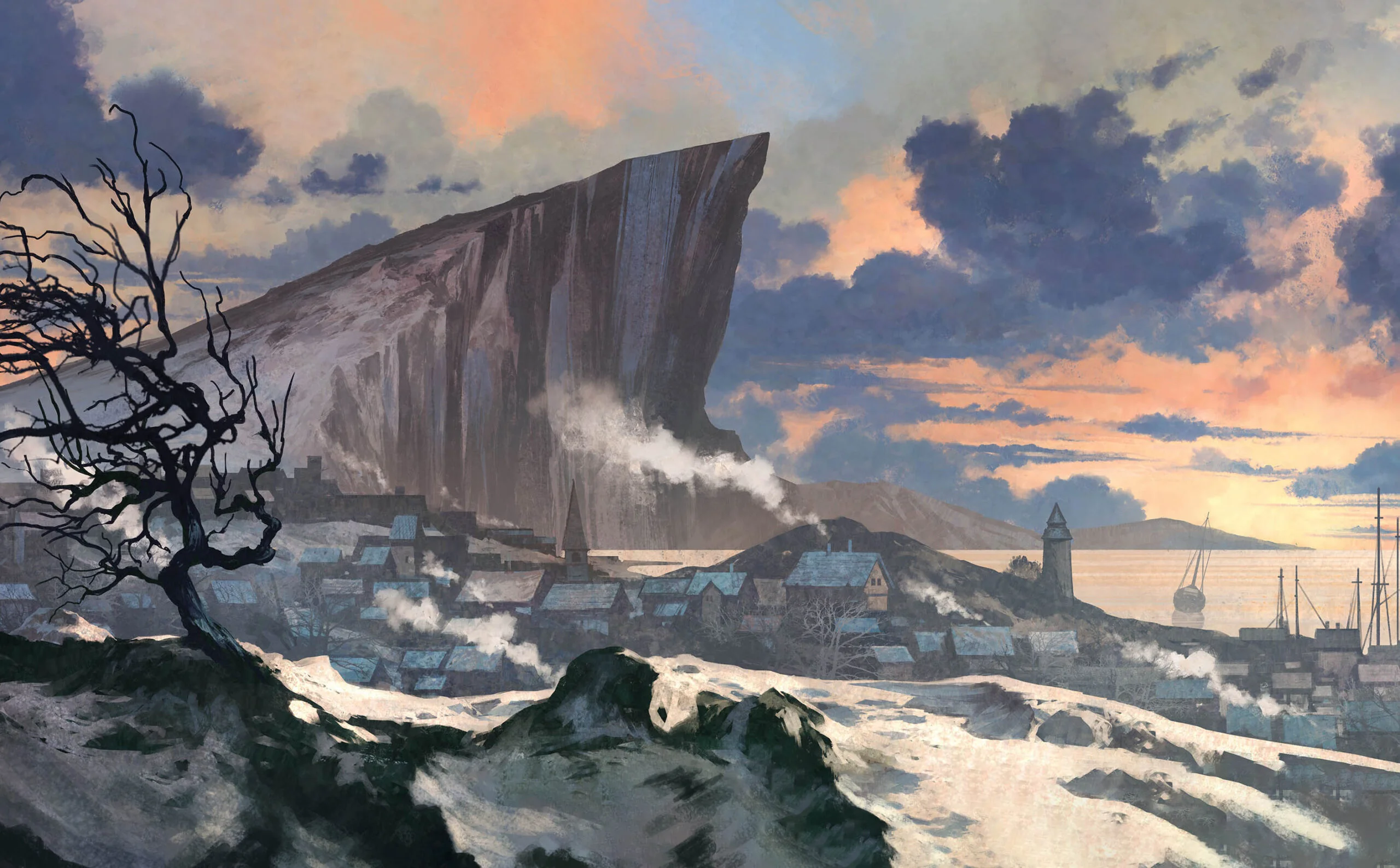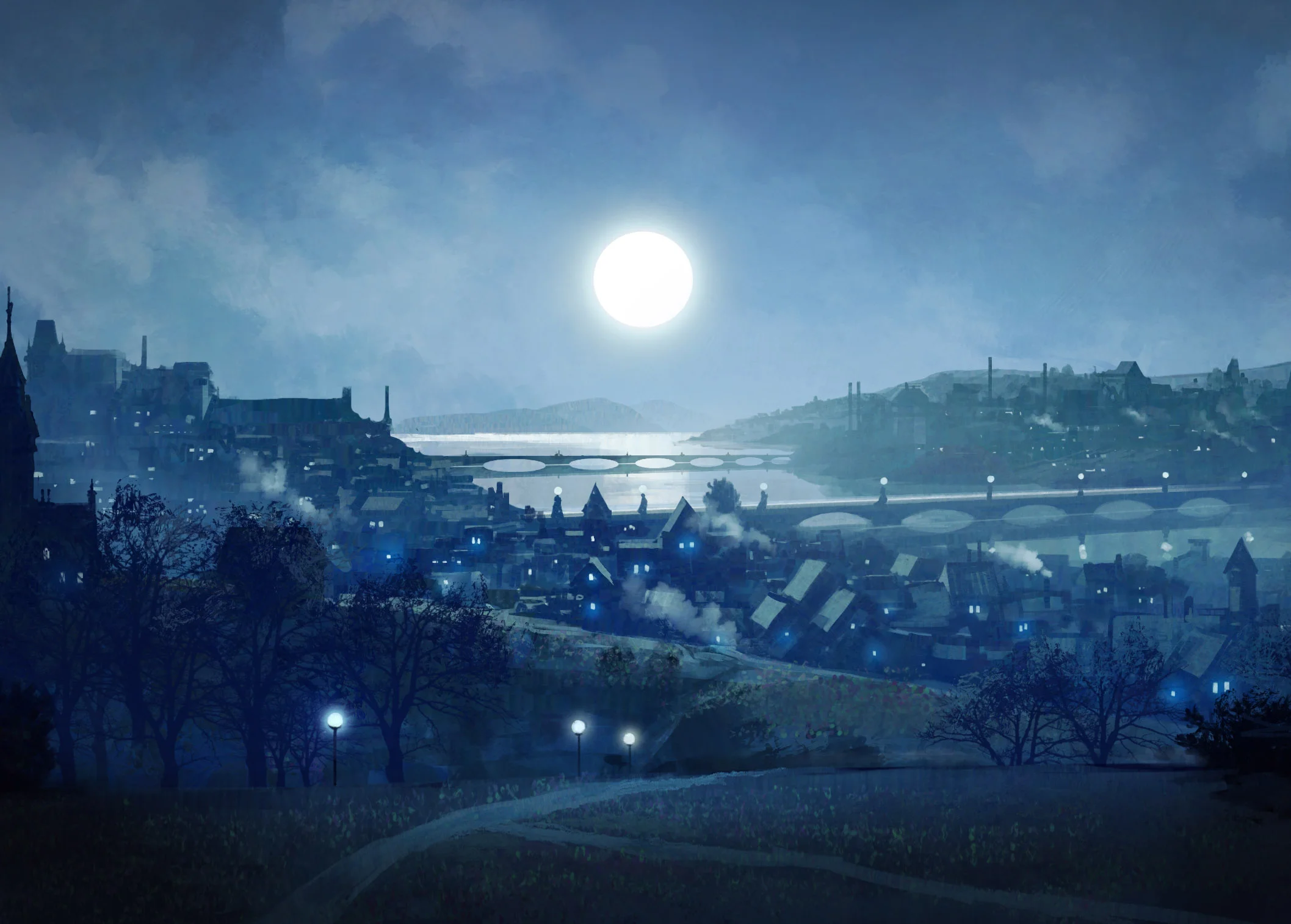

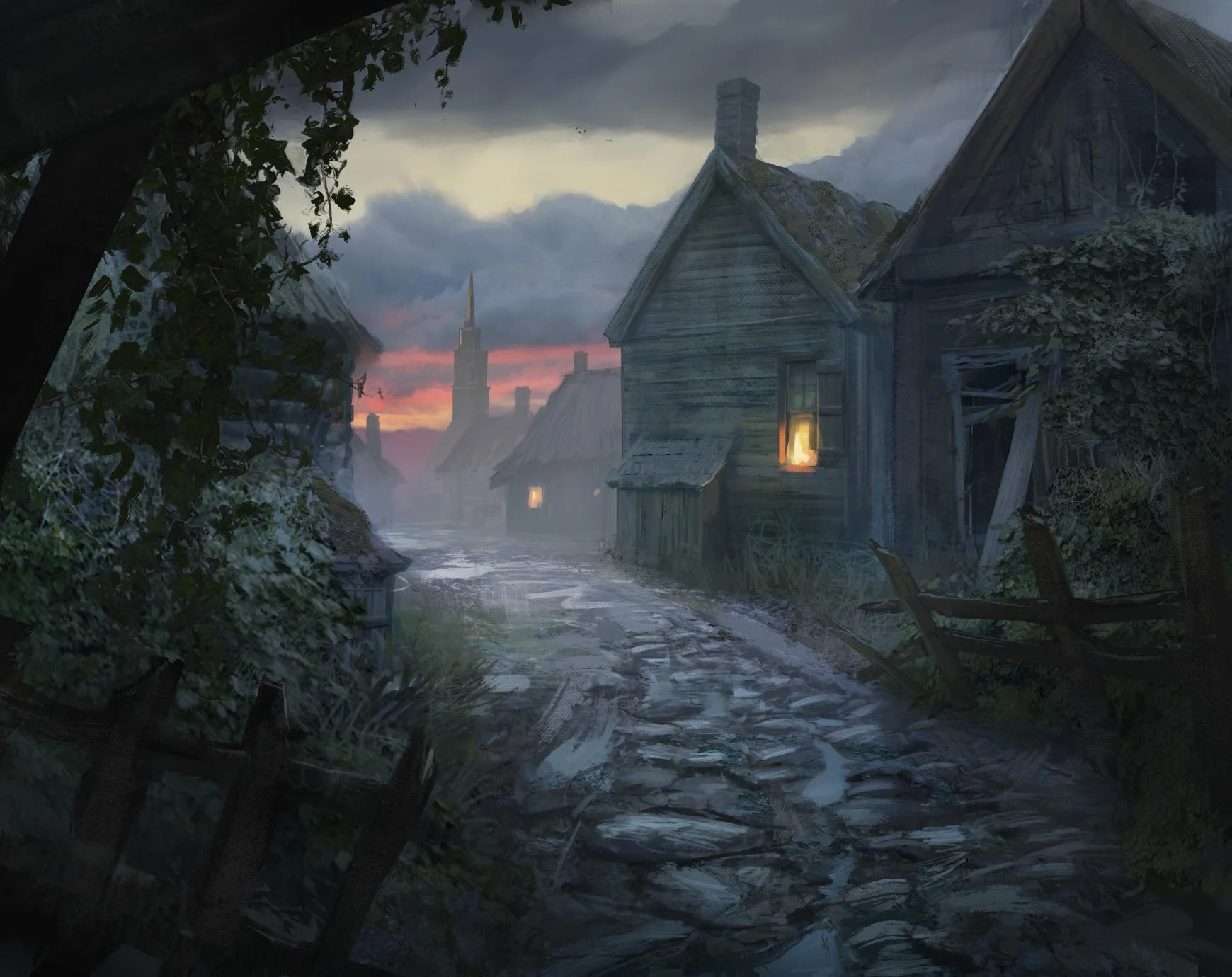
“The ground gets higher, and the brier-bordered stone walls press closer and closer against the ruts of the dusty, curving road. The trees of the frequent forest belts seem too large, and the wild weeds, brambles, and grasses attain a luxuriance not often found in settled regions. At the same time the planted fields appear singularly few and barren; while the sparsely scattered houses wear a surprisingly uniform aspect of age, squalor, and dilapidation.”
– H. P. Lovecraft, The Dunwich Horror
Fallow Fields and Blasted Heaths
The town’s best farming days are long behind it, and the few families that remain in the town and its environs do so out of obligation or simply not knowing any other life beyond their sleepy village. Even Dunwich’s best-kept buildings have begun to fall into disrepair, and its oldest buildings have begun to collapse, fading into mere stone ruins amongst the ever-encroaching woods.
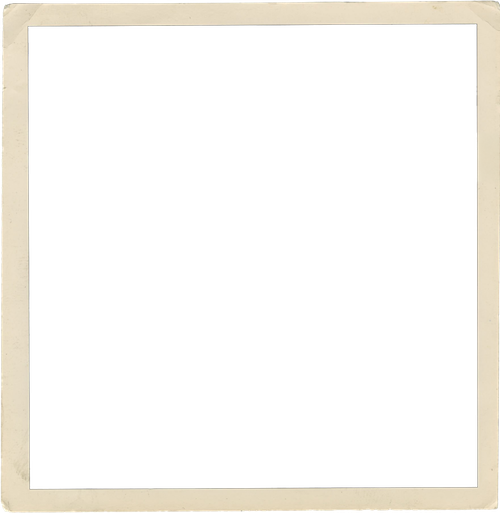
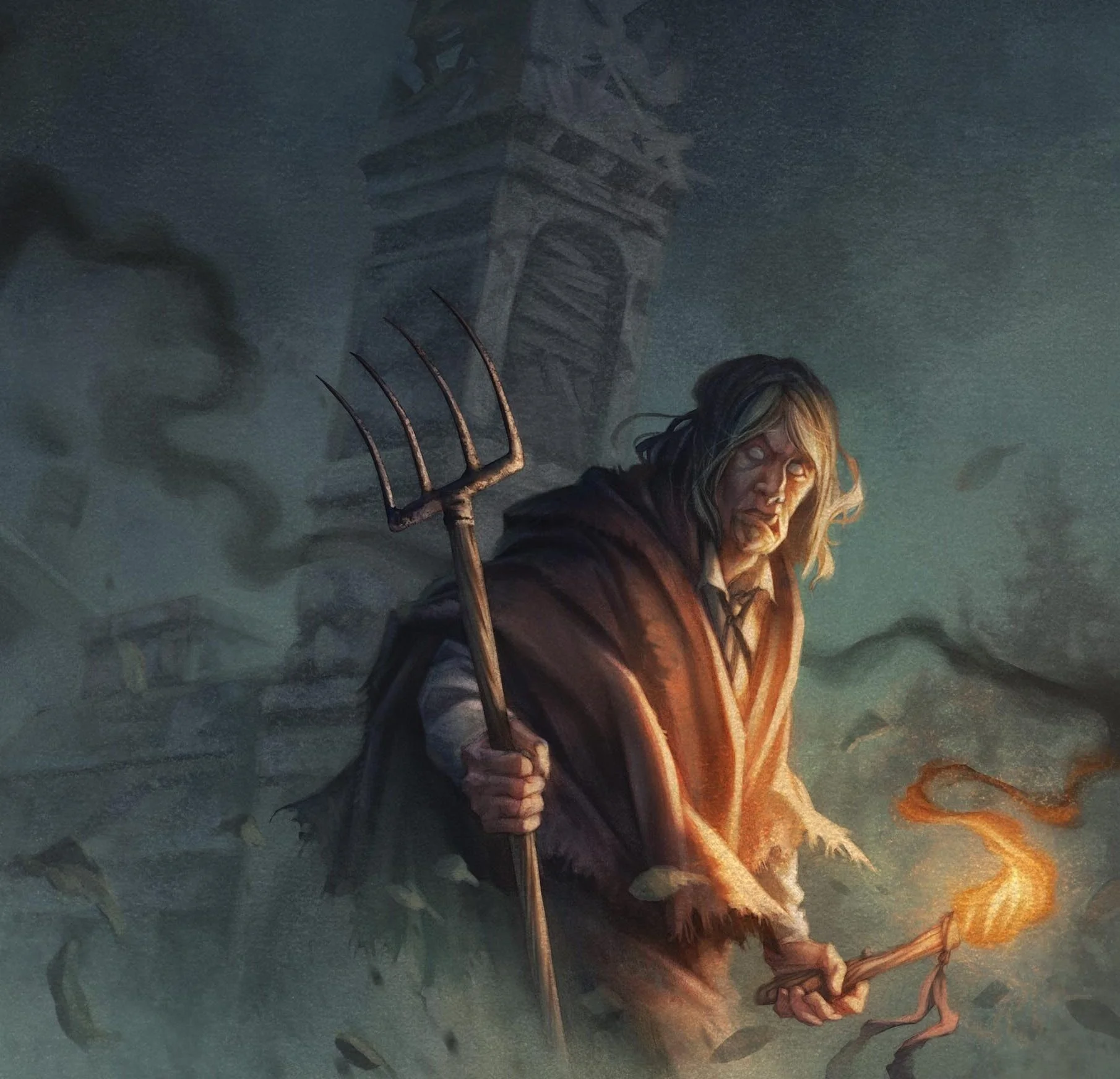

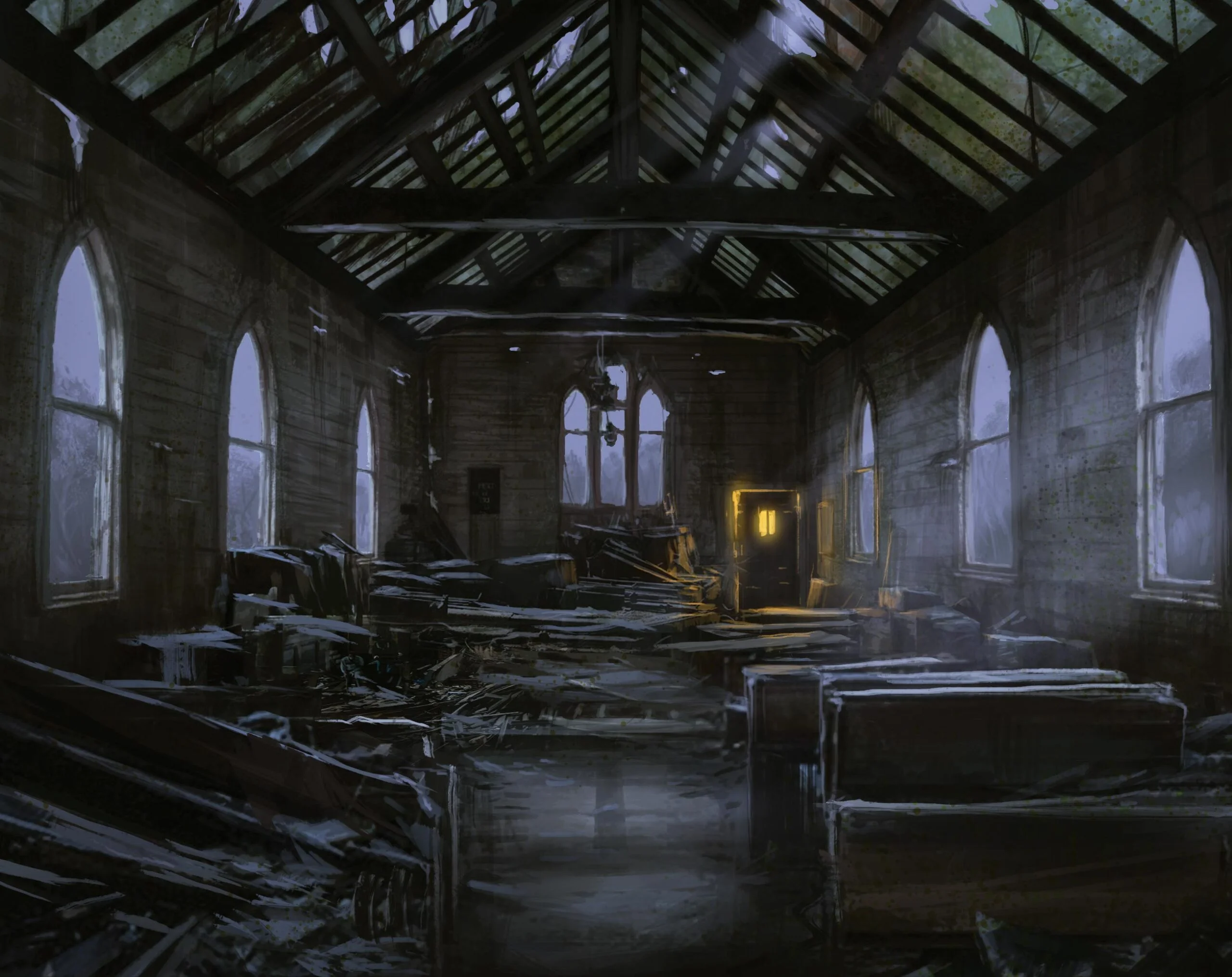



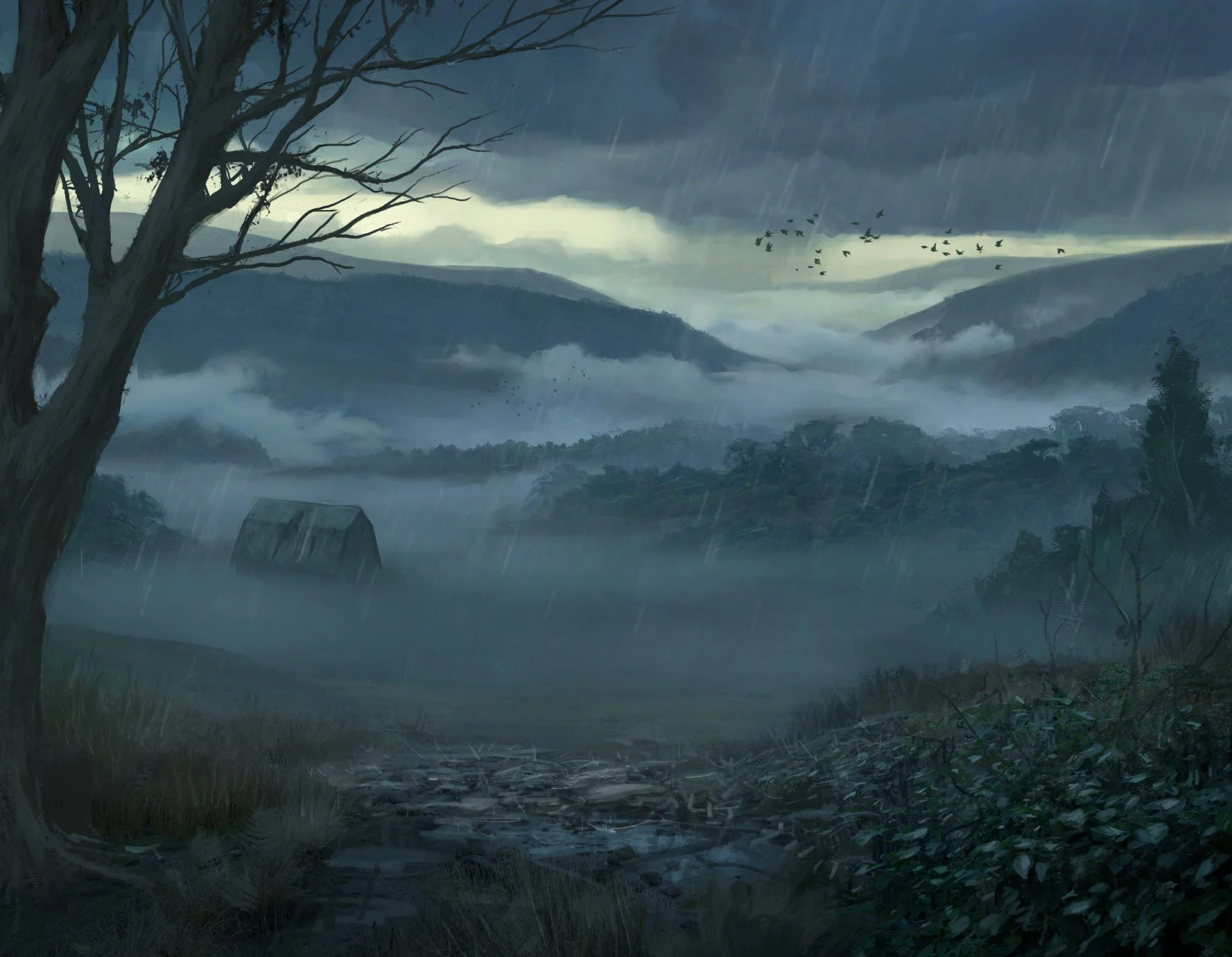
Of late, the land has been plagued by unexplainable incidents that have the townsfolk on edge. At night, things emerge. The sounds of their terrifying rampages are unmistakable, as is the evidence of their destruction the next day—dead cattle, destroyed farmsteads, missing townspeople. For the superstitious folk who live here, the nighttime piping of whip-poor-wills is all the proof they need that death has come to Dunwich.
The Dunwich Horror
Following the events of “the Horror,” Sentinel Hill may be the most infamous location in all of New England. Atop the peak of Sentinel Hill, the malformed scion of the degenerate Whateley clan called upon his blasphemous sire and was driven back only through the intrepid actions of some crazy investigators hailing from Arkham. Since then, few if any Dunwich residents are wont to venture to Sentinel Hill, much less ascend it. The quaint local name of “Wizard’s Hill ,” long preferred around Dunwich, has taken on new and sinister significance in light of the Horror.

